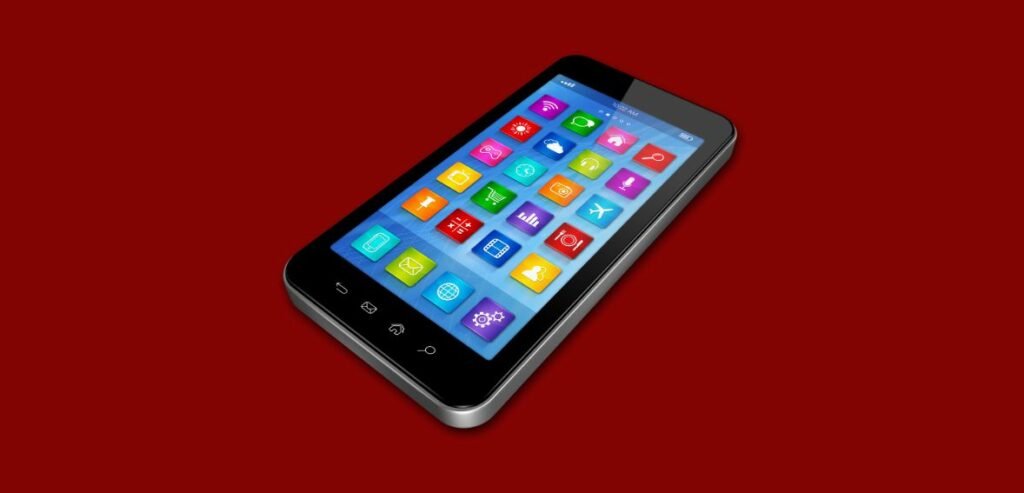In the digital age, people have come to rely on smartphones for many purposes. They’re practically inseparable from one another. In what the retail industry views as a natural progression from accessing calls, texts, and emails, consumers are also using their smartphones as part of the shopping process.
In a new report by G/O Digital and Keyring, 90% of respondents affirmed that they use their smartphones at some point while shopping. The study investigates the ways in which consumers are using mobile technology and makes some targeted suggestions for retailers looking to keep up with their shoppers.
Smartphones grant access
According to the survey, a staggering 90% of respondents chose their smartphones as the most convenient devices for in-store shopping activities.
When asked about their pre-store shopping practices, 89.3% of respondents acknowledge that they prefer using their smartphones to other devices for making shopping lists. Up to 61% write shopping lists frequently.
Research is key

An impressive 55.4% of respondents stated that they use their mobile devices to conduct price-related searches: searching for coupons, browsing deals and sales, and comparing prices. 47.4% of respondents stated that they are most likely to purchase one of the items they’re researching when that item’s price is discounted through a sale or coupon.
Trends vary by store
Although consumer research is important across all kinds of retail stores, consumer preferences differ from category to category.
Consumers shopping for apparel and shoes are vastly more likely to purchase an item while it is on sale or clearance: 60.7% of respondents chose this as the top purchase influencer. By comparison, coupons accounted for 10.9% of influence, while brands were ranked even lower at 7.9%. These shoppers are looking for savings on the products they want.
Consumers shopping for groceries rated sales (29.8%), quality (26.4%), and everyday low prices (20.7%) as the most significant influences. Coupons were chosen by only 13.1% of respondents. These shoppers are looking for consistency in the stores they frequent.
Consumers shopping for electronics value reviews and ratings more than any other factor: 54.4% of respondents chose it as the most important influence on the purchase process. 21.1% chose sales, and 15.2% chose brands, but only 3.4% chose coupons. These shoppers are looking for trustworthiness in the products they want.
Recommendation: personalize information and advertising

The report suggests that retailers invest in targeted advertising for specific locales. Consumers are more receptive to advertising that seems to understand their needs, and they are more responsive to stores that provide “personalized content.”
The report states:
In today’s “Age of the Customer,” consumers want and expect the shopping experience across every single channel and device to be highly personal, relevant and targeted to their local needs – and in real-time too.
Retailers should also think about how smartphones and general connectivity affect the store selection experience for their shoppers. Consumers are likely to use their smartphones for everything from locating stores to reading store reviews, looking up hours, and even checking location inventory. Stores should be looking to make this information as available to mobile platforms as possible. The easier it is for research-savvy consumers to find a retailer’s locations, inventories, and discounts through mobile research, the greater the opportunity for that retailer to win the sale by influencing the purchasing process.
HMS can help
All of the above information points merchants toward a single conclusion: cater to your customers in their real-time local environment. HMS simplifies this task by offering point-of-sale solutions for your business. With a POS system, you gain access to many features: you can automate your inventorying system, integrate e-commerce, and track trends.
Automated inventory and integrated e-commerce options allow you to provide your customers with up-to-date online information about your stock, and they also enable your customers to make online purchases immediately.
POS systems also provide reporting features, which allow you to track sales by item, the success of certain promotional campaigns, and customer loyalty. These features, in turn, allow you to customize your business strategy to better reach your target audience. They allow you to design more effective marketing campaigns, distribute relevant promotional information, and maintain customer loyalty.
For more information about our POS solutions, please contact us.
Image and facts from The Local Mobile Advantage of Retailing (report).
Benefits Of Smartphones In Improving Retail Experience
How Smartphones Are Ehnacing Retail Experience For Users
In our fast-paced society, smartphones have become an integral aspect of our everyday life. They play a role in all aspects of our lives such as communication, entertainment, shopping, and banking. As e-commerce continues to grow traditional physical stores find themselves facing competition. Nevertheless of perceiving smartphones as a detriment, to their business retailers can utilize them to improve the retail experience.
Increased Accessibility And Convenience For Consumers

A significant revolution brought about by smartphones is the rise of shopping apps. These apps enable consumers to explore and purchase products from the comfort of their homes. While on the go. This eliminates the need to physically visit a store saving both time and effort. Moreover, these apps often offer recommendations, seamless payment options, and real-time updates on sales and promotions.
Another way in which smartphones are enhancing accessibility in shopping is through stores. Retailers now employ reality technology to create stores that can be accessed through smartphone cameras. This allows consumers to virtually try on clothes or visualize furniture in their homes before making a purchase decision. Not only does this make shopping more convenient. It also minimizes the risk of buying items that may not fit or meet individual requirements.
Furthermore, smartphones are revolutionizing payment methods with wallets, like Apple Pay and Google Wallet. Consumers no longer need to carry cash or cards while shopping as these wallets offer an alternative.
Digital wallets provide a way to store credit and debit card details. They can be conveniently accessed via a smartphone when making purchases. This not only accelerates the payment procedure but also enhances security by minimizing physical contact, with commonly touched surfaces.
Personalization And Customization Through Mobile Apps
Smartphones have revolutionized the industry in many ways and one significant change is the emphasis on personalization. Retailers now leverage customer data gathered through their apps to gain insights into preferences, behaviors, and purchasing patterns. This enables them to offer recommendations and special deals that are tailored to each customer’s needs and interests.
For instance, if a customer frequently buys skincare products from a brand using the retailer’s app they might receive promotions or recommendations for new products from that same brand. This personalized approach not only enhances the shopping experience but also demonstrates that the retailer values and understands their customer’s preferences thereby increasing the likelihood of making a sale.
Additionally, mobile apps provide customization options that were previously unavailable in stores. Customers can conveniently personalize their orders or items through an app rather than relying on salespeople or browsing physical product displays. This newfound control over purchase decisions empowers customers. Enhances their shopping experience.
Another way mobile apps enable personalization is by leveraging location data to tailor marketing messages. By utilizing GPS technology integrated into smartphones retailers can send notifications or alerts about promotions or store events based on a customer’s current location.
Overall smartphones have brought about an era of personalization, in retail through data-driven insights, customization options, and targeted marketing strategies enabled by apps.
Enhanced Customer Service And Communication
As e-commerce and mobile shopping continue to rise in popularity retailers have had to adapt their strategies to meet the needs of a growing number of customers who prefer using their smartphones for shopping. But it’s not about changing how people shop but smartphones are also bringing about a revolution in the customer service experience.
One of the ways that smartphones are improving customer service in retail is through enhanced communication channels. In the past customers had to visit a store or call a customer service hotline for any inquiries or concerns they had. This process could be time-consuming and frustrating for both parties involved.
However, with smartphones communication has become significantly more convenient and efficient. Customers can now easily connect with retailers through channels like social media platforms, email, live chat support on websites, and even text messaging. This allows for responses and quicker resolutions compared to other methods.
Furthermore, many retailers have developed their apps that offer additional features such as real-time customer support chats where shoppers can receive instant assistance with their purchases.
Some applications also offer the option for customers to conveniently monitor their orders and receive updates, about sales or promotions on their smartphones. Moreover, smartphones are facilitating communication within stores. For instance, employees who have been provided with company smartphones can easily communicate with one another regarding inventory levels or product availability eliminating the need, for methods of communication.
Mobile Payment Options For A Seamless Checkout Process

Thanks to the increasing popularity of smartphones and mobile technology retailers now have the ability to provide mobile payment options that greatly simplify and streamline the checkout process, for both customers and businesses alike.
Mobile Wallets
Mobile wallets have become incredibly popular as a way to make payments using your device. They offer a solution by allowing users to store their credit or debit card details on their phones. This means that you can easily make payments at participating stores without needing to carry wallets or cards.
Known mobile wallet options include Apple Pay, Google Pay, and Samsung Pay. These platforms use near-field communication (NFC) technology making it simple for users to complete transactions by tapping their phone on a terminal.
One of the benefits of using wallets is the enhanced security they provide. With features like authentication (such as fingerprint or facial recognition) tokenization and encryption these platforms offer a layer of protection, against fraud when compared to traditional cash or card transactions.
QR Code Payments
QR code payments have become more and more popular with better and compatible smartphones entering the market. This particular method includes scanning a QR code presented by the retailer using a smartphone camera app that’s connected to a payment method. It is gaining traction due to its simplicity and cost-effectiveness for both consumers and businesses. With QR code payments consumers no longer need to worry about carrying cards or cash.
Data Tracking And Analysis For Targeted Marketing Strategies
The use of smartphones has significantly transformed data collection and analysis in the industry. With more and more shoppers relying on their phones for shopping retailers now have access to an amount of data that can be leveraged to develop targeted marketing strategies.
Let us start by discussing how smartphones are reshaping the way data is gathered in stores. In the past traditional methods like surveys and focus groups were employed to understand consumer behavior. However, these methods were time-consuming, expensive, and often provided insights. Thankfully with smartphones being a part of our daily lives, retailers can capture real-time data through various channels such as mobile apps, social media platforms, and even Wi-Fi tracking.
Mobile apps have emerged as tools for collecting information about consumer behavior. Many retailers have their branded apps that enable them to track user activity within the app itself. This includes details like viewed items, purchases made, and even location data if users have granted permission. Additionally, social media platforms offer insights into consumer behaviors through analytics tools that track engagement rates and demographics.
Furthermore, smartphones are revolutionizing data collection in stores through in-store Wi-Fi tracking—an approach. This technology allows retailers to gather information about customer movements, within their stores.
Retailers can gather insights, about customer behavior by providing Wi-Fi in their stores. This enables them to track the movement of customers, within the store using their smartphone’s MAC address. Through this retailers can identify the frequented areas of the store. Pinpoint any areas that may require enhancements or improvements.
Streamlining Inventory Management And Supply Chain Processes

The retail industry has always been an ever-changing market, where businesses are constantly looking for ways to streamline operations and enhance efficiency. Inventory management and supply chain processes have undergone advancements in years thanks, to the integration of smartphones into the retail landscape.
Gone are the days of inventory counting or relying on outdated systems to keep track of stock levels. Smartphones have revolutionized how retailers handle their inventory making it faster more precise and more efficient than before.
One of the advantages of using smartphones for inventory management is that it eliminates the need for data entry. In methods, employees had to count products and then input this information into a computer system. This process was not time-consuming but also prone to errors. With smartphones, retailers can utilize barcode scanning technology to record product details without any room for mistakes.
Furthermore, smartphones enable real-time updates on inventory levels. As soon as a product is scanned or sold the system is automatically updated, providing retailers with up-to-the-minute information, on stock levels at all times. This helps prevent overselling or overstocking of products and empowers businesses to make informed decisions regarding restocking orders or promotional activities.
One of the benefits of utilizing smartphones to manage inventory is their convenience. Employees are no longer restricted to a place or device, for inventory management. They can effortlessly access the required software or applications using their smartphones from any location, within the store thereby enhancing convenience and productivity.

